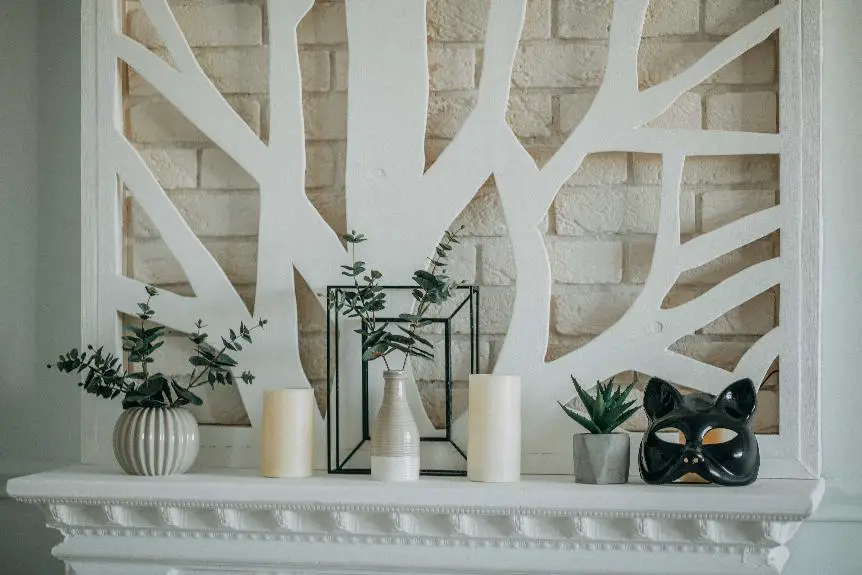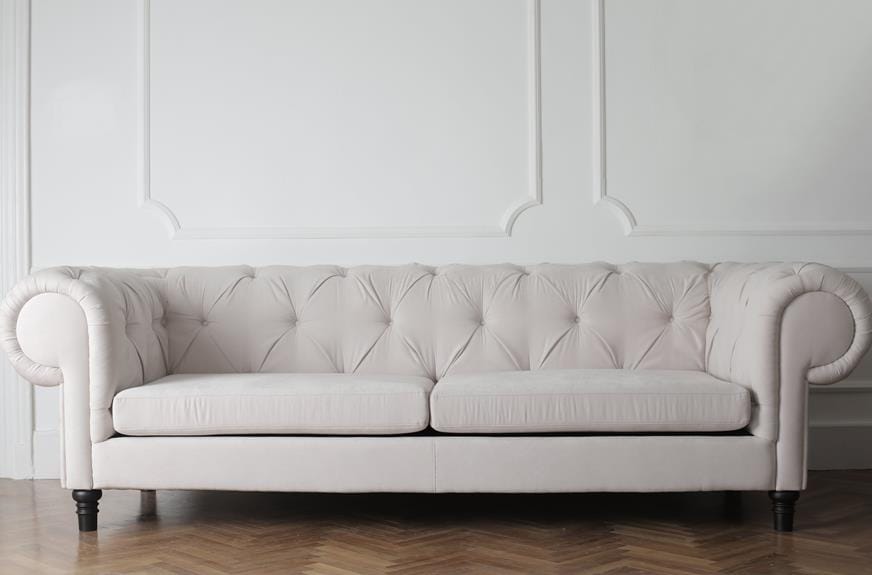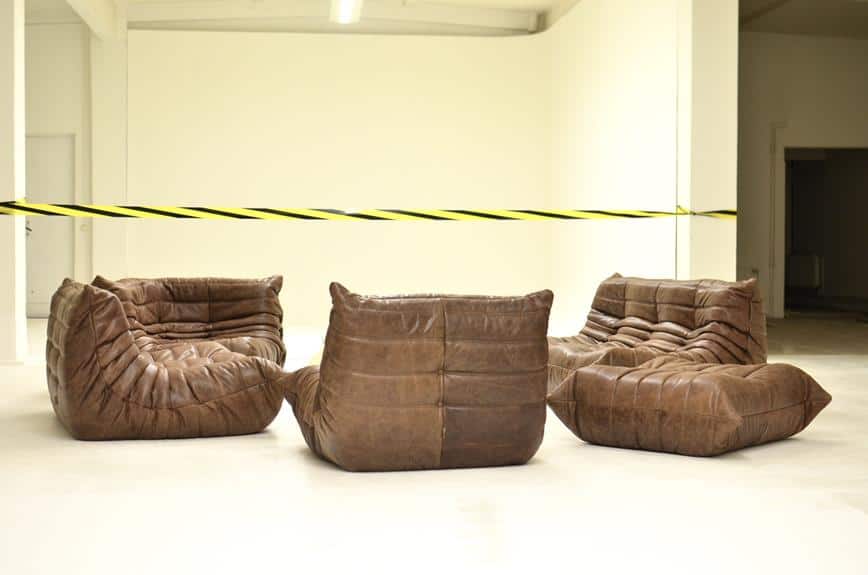The standard height for a fireplace mantel is about 54 inches from the floor to the bottom of the mantel shelf. This height aligns with the average eye level and suits the scale of most rooms.
Adjustments may be necessary based on ceiling height, fireplace dimensions, and personal preference.
Safety regulations require certain distances from the firebox to prevent fire risks and must be followed when installing a mantel.
Homeowners can customize the height to fit specific requirements, such as placing a TV above the fireplace or incorporating particular decorative items.
Understanding Mantel Height Regulations
Fireplace mantels must be installed at least 6 inches above the fireplace opening as required by national fire codes. This rule helps prevent fire hazards in buildings. The National Fire Protection Agency (NFPA) guidelines specify this height to keep a safe distance from the heat and flammable mantel materials.
If the mantel extends over 1.5 inches from the fireplace, it needs more clearance. For every additional inch of extension, an extra inch of space is required. To meet building codes, the mantel's bottom should be a minimum of 12 inches above the firebox, enhancing safety and reducing heat damage risks.
To protect against fire risks, non-flammable materials like marble or tile should be placed between the fireplace and the mantel, acting as a heat shield. For tighter clearances, a mantel heat shield is advised to deflect heat and protect the mantel from damage or discoloration.
Manufacturers provide instructions on mantel clearances for fireplace inserts to ensure safety. These must be followed to comply with safety regulations and to enjoy a safe fireplace use.
Standard Mantel Height Guidelines
The standard height for a fireplace mantel is 54 inches above the floor of the hearth. This height may be adjusted based on the fireplace's size, room design, and ceiling height. For smaller rooms, the mantel may be lower, while higher ceilings may permit a taller mantel.
The National Fire Protection Agency (NFPA) requires a minimum of 12 inches of clearance between the top of the firebox and the bottom of the mantel to reduce fire risks. Additionally, if the mantel protrudes, it must be higher: for every 1/8 inch of protruding material, an extra inch of clearance is needed.
When installing a TV above the mantel, the height should accommodate comfortable viewing to prevent neck strain. Following these guidelines ensures safety, functionality, and aesthetic quality.
Factors Influencing Mantel Height
When choosing the height of a fireplace mantel, consider aesthetics, function, and safety codes. Mantel height varies and should be balanced with the fireplace's size and layout to maintain visual appeal and not dominate the room. It must also be placed at a safe distance from the firebox to avoid heat damage; typically, a mantel should be at least 6 inches above the fireplace opening, with non-combustible material shielding any nearby combustibles.
Building codes are crucial for safe mantel placement, dictating the minimum distance from the fireplace to prevent fire hazards. Additionally, if a television is to be mounted above the fireplace, the mantel height must allow for a comfortable viewing angle from the seating area and prevent heat from the fireplace from damaging the TV. This involves evaluating the fireplace height, seating distance, and wall temperature.
Measuring for Mantel Installation
To install a fireplace mantel correctly, accurate measurements are critical for both functionality and adherence to safety codes. Begin by evaluating the size and configuration of the fireplace. A typical mantel is mounted 54 inches from the hearth floor, although this height may vary. For safety, the mantel should start at least 12 inches above the firebox and maintain a 6-inch clearance from the opening to any combustible materials, as per National Fire Codes.
If you plan to place a TV above the mantel, consider the viewing angle and check that the wall temperature stays within safe levels for electronics by using a thermometer while the fireplace is active.
Install non-combustible material between the mantel and firebox if they are close to each other. When space is limited, use a mantel heat shield to prevent heat damage, discoloration, or warping.
Record all measurements accurately and confirm their precision. It is important for the mantel to be level for a professional appearance.
Following these guidelines will help ensure a safe, attractive, and durable mantel installation.
Safety Considerations for Mantel Placement
It is essential to install a fireplace mantel at a safe distance to prevent fires. Mantels are not just decorative; they must be installed with safety in mind. The National Fire Codes require that combustible materials be at least 6 inches away from the fireplace opening to minimize the risk of fire.
If a mantel is too close to the fireplace, a layer of non-flammable material such as marble, stone, or tile must be used to protect it from the heat. For tight spaces, heat shields can be installed on the mantel to deflect heat and prevent damage.
Manufacturers of fireplace inserts provide clear instructions on safe distances for mantel placement. These are not suggestions but mandatory safety requirements. It is crucial to follow these instructions and local building codes to avoid dangerous conditions.
Aesthetic Implications of Mantel Height
Mantel height is crucial for the visual appeal of a room with a fireplace. The standard height for a mantel is about 54 inches from the floor, which usually helps achieve a balanced look. The right height depends on the size of the fireplace and mantel; a too high mantel can make the fireplace look small, while a too low mantel can overcrowd the space.
If mounting a TV above the fireplace, the mantel must be at a comfortable height for viewing and still look good. This requires balancing ergonomic viewing height with standard mantel placement.
Also, the mantel should match the room's ceiling height, style, and furniture for a cohesive appearance. A well-proportioned mantel can improve a room's aesthetic, whereas a poorly placed mantel can disrupt the ambiance.
It's important to consider mantel height carefully for a pleasant and well-integrated living space.
Adjusting Height for Television Mounting
When mounting a TV above a fireplace, the height of the mantel affects where to place the TV for a good viewing experience and for safety. If the mantel is under 4 feet high, mount the TV about 12 inches above it. This height is comfortable for most people sitting down and prevents neck strain or blocked views.
For mantels over 4 feet high, mount the TV about 6 inches above to protect it from the fireplace's heat. Always check the temperature where the TV will go to avoid heat damage.
Consider viewer comfort, device safety, and room design when setting the height for a TV over a fireplace. Proper positioning of both the mantel and TV creates a functional and visually appealing focal point. Follow these guidelines for a well-balanced living space.
Mantel Height Customization Tips
To customize the height of a fireplace mantel, you should consider the room's design and the space's functional needs. The typical mantel height is around 54 inches from the hearth floor, but this should be adjusted according to your fireplace's specific layout and size. Following guidelines for mantel height customization is essential for an attractive and practical installation.
For safety, ensure at least 12 inches of clearance between the firebox top and the mantel bottom. If your mantel material or design is particularly heat-sensitive, increase this clearance.
If you plan to mount a TV above the fireplace, adjust the mantel height to achieve a comfortable viewing angle and test the wall temperature to avoid TV damage. Use a mantel heat shield if necessary.
Also, consider the room's scale and proportions when setting the mantel height. The mantel should be a focal point without dominating the room. Take into account the ceiling height, firebox size, and the room's decor to maintain balance and harmony.
Adhering to these guidelines will help ensure your fireplace mantel is both safe and aesthetically pleasing.




